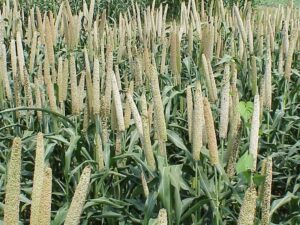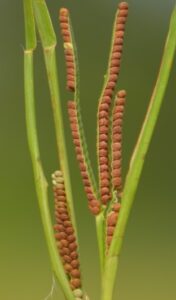Talking about Millets: Historical Superfoods
Food is one such necessity that even with the health and environmental concerns associated with the food (production and consumption), its utilization is utmost necessity for survival of mankind. Therefore, it is crucial to think about modifying our food production and consumption strategies so as to offer a sustainable solution protecting health and environment.
Millets are promising food items having the potential to address these challenges.
Millets is a group of crops namely finger millet, foxtail millet, kodo millet, pearl millet, jowar, swank, little millet, proso millet and browntop millet.
Millets are being used by farmers as fodder for animals, but these were once the part of traditional Indian cuisine and of other continents including Africa!
Millets in traditional Indian food system
Historical evidence shows that Baba Nanak ate Kodhra (Kodo Millet) roti during his meeting with Bhai Lalo and Malik Bhago.

Millet are reflected in the idioms, phrases and folk orations of Punjab. Our forefathers led a more active & healthier life as Millets like Ragi, Jowar, Foxtail were an integral part of their daily meals. They passed down these super grains from generation to generation as a treasure for our well being.
Due to poor interest towards millets consumption, the millet seeds haven’t got much attention.. This offers us an opportunity of getting back to use of natural seeds.
Why talk about Millets?
Millets can play important role in diversification of crops urgently required in states like Punjab, Health and Environmental improvement and sustainability.
The millet acreage over the last couple of decades has shrunk from 18 million hectares to 9 million hectares, thus depriving the poor of their nutritional food, livelihood, security and control over their farming. There is deterioration in animal health. Farmers’ dependence on company-produced cattle feeds has increased.
Millets as answer to health issues

Pearl millets: people with obesity, diabetes, piles, blood pressure and shortness of breath.

Jowar: Rich in potassium and phosphorous, Contains antioxidants with a fairly high protein level, Has a good amount of calcium with small amounts of iron and sodium, good for heart and overall metabolism.

Finger Millet (Ragi) is also known as ‘Gold of the Poor’. It is rich in calcium, about ten times that of rice or wheat. It contains high amounts of protein with well-balanced essential amino acids, along with vitamin A, vitamin B and Phosphorous. Its high fiber content prevents constipation, high blood pressure and intestinal cancer.

Foxtail millet: It has double the quantity of protein content as compared to rice. It regulates blood sugar and cholesterol levels. It optimizes the immune system. It is good for stomach related ailments, obesity, constipation, arthritis, fever, burning sensation while urinating, lack of appetite and diarrhea. It is a nutritive food for children and pregnant women. It’s a potential solution to the malnutrition

Barnyard Millet (Swank) is a good source of protein and fights hypertension and diabetes.

Browntop Millet can grow in shade as well, a disease and pest resistant crop, is believed to make the field pest free wherever it is grown.

Little millet is miracle food for digestive system ailments and reproductive health for males and females, can be used as baby food as well.
Kodo Millet is a gluten free grain alternative, is a neuroprotective food and good for diabetics, and can be grown in drought like conditions.

Nutritional Value of Millets for Human consumption
Millets as answer to reversal of Agro Ecological Crises
- Millets do not demand synthetic fertilizers
- Millets are Pest Free Crops
- Millets grow on the Poorest of Soils
- Many Millets are grown to Reclaim Soils
- Millets can withstand drought like conditions
- Millets are climate change compliant crops
- Millets are also the pivot around which a vibrant agro-biodiversity survives, wherever it is allowed to survive